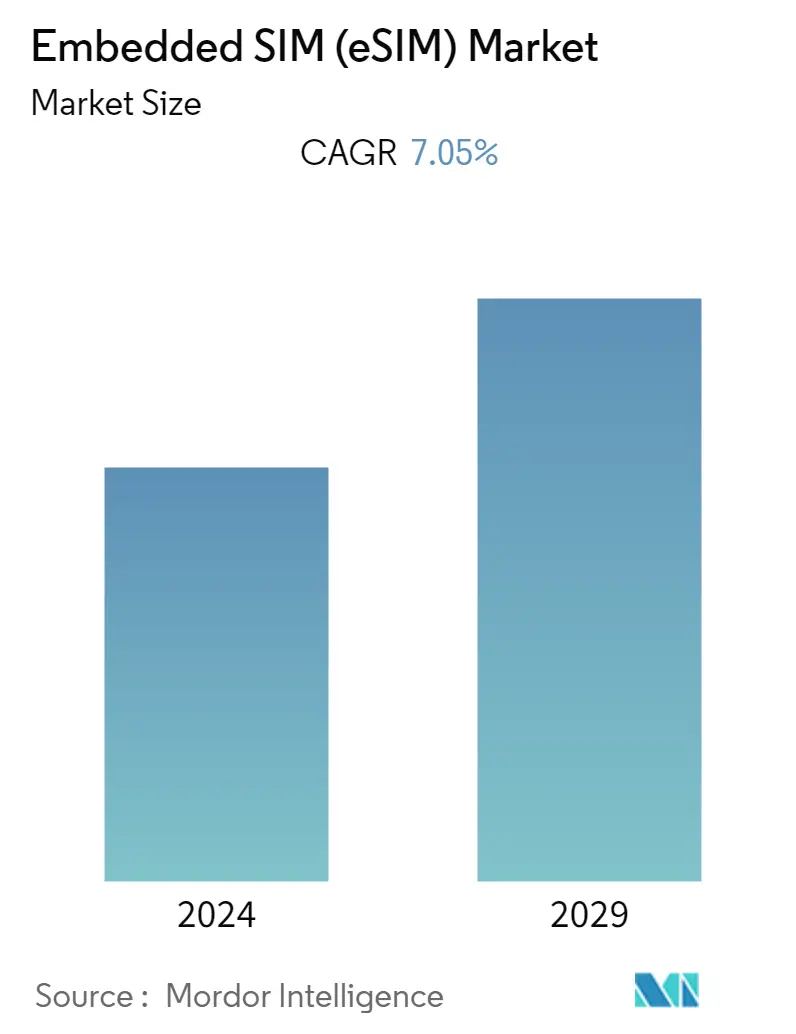Market Size of Embedded SIM (eSIM) Industry

| Study Period | 2019 - 2029 |
| Base Year For Estimation | 2023 |
| CAGR | 7.05 % |
| Fastest Growing Market | Asia Pacific |
| Largest Market | North America |
| Market Concentration | Low |
Major Players
*Disclaimer: Major Players sorted in no particular order |
Need a report that reflects how COVID-19 has impacted this market and its growth?
Embedded SIM (eSIM) Market Analysis
The Embedded SIM (eSIM) Market was valued at USD 7.71 billion in the current year and is expected to register a CAGR of 7.05%, reaching USD 11.71 billion in five years. An eSIM is a small, programmable chip embedded directly into devices, such as smartphones, tablets, wearable devices, and other IoT devices, allowing remote SIM provisioning without needing a physical SIM card.
- The Internet of Things (IoT) was one of the key drivers for eSIM adoption. As the number of connected devices increased, managing physical SIM cards for each device became impartial. eSIM provided a scalable solution for deploying and managing IoT devices globally.
- Advancements in the connected and M2M (machine-to-machine) ecosystem were key drivers in the market's growth. The growth of the 5G network also creates new opportunities for eSIM adoption. Enterprises embraced eSIM for their M2M deployments, such as asset tracking, smart meters, industrial monitoring, and supply chain management.
- The growing demand for smart devices was one of the key drivers that increased the adoption of eSIM technology. Smart devices, including smartphones, tablets, wearables, connected cars, and various Internet of Things (IoT) devices, have become more prevalent in consumer and industrial applications.
- Security and interoperability standardization issues are restraining the market growth. With traditional SIM cards, physical access is required to tamper with or replace the SIM, making it more difficult for malicious actors to compromise the connection. However, as eSIM is soldered directly onto the device's circuitry, the potential for unauthorized access or cloning could be a significant security risk.
- The COVID-19 pandemic forced organizations to adapt rapidly to remote work and digital solutions. This increased reliance on connected devices and IoT technologies, where eSIM is vital in enabling secure and seamless connectivity.
